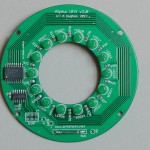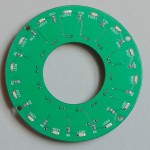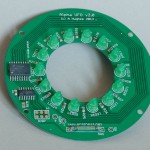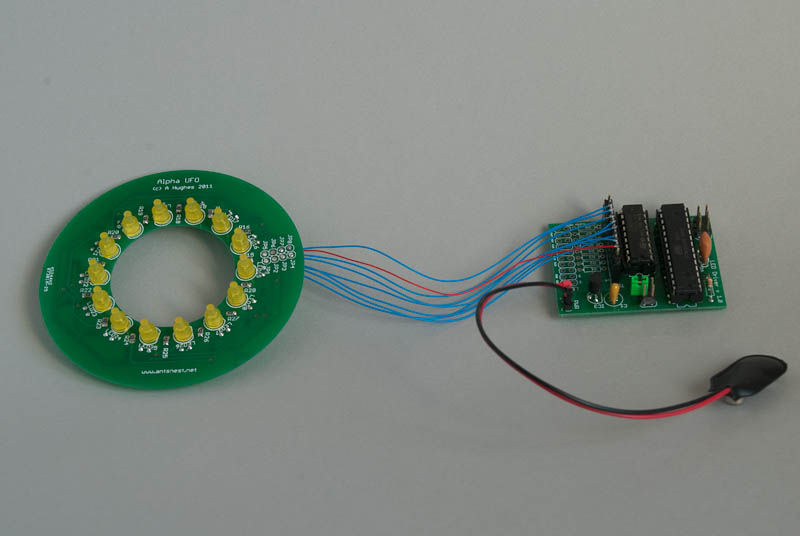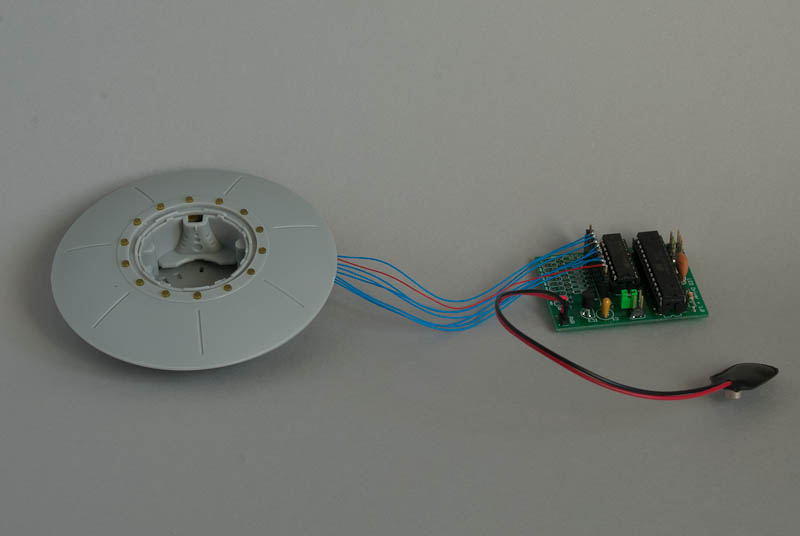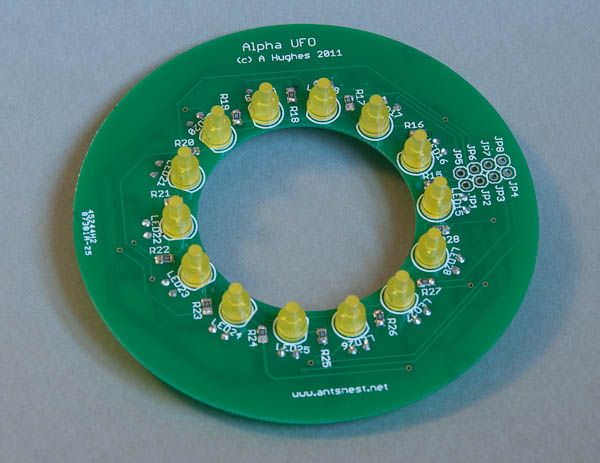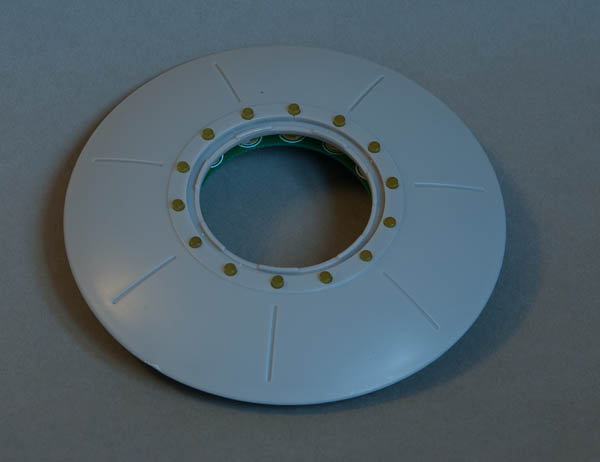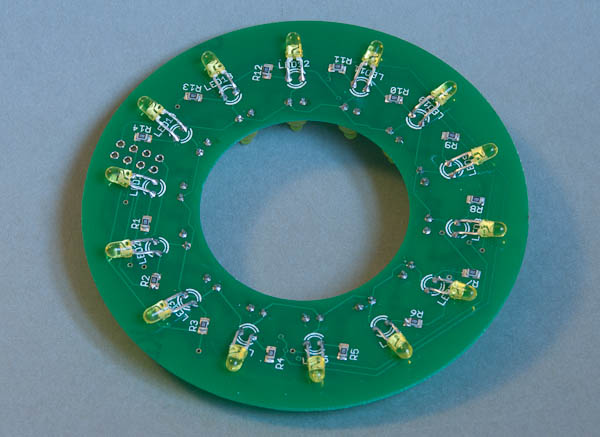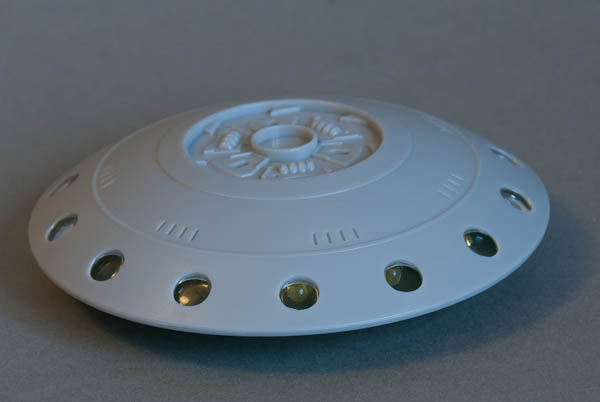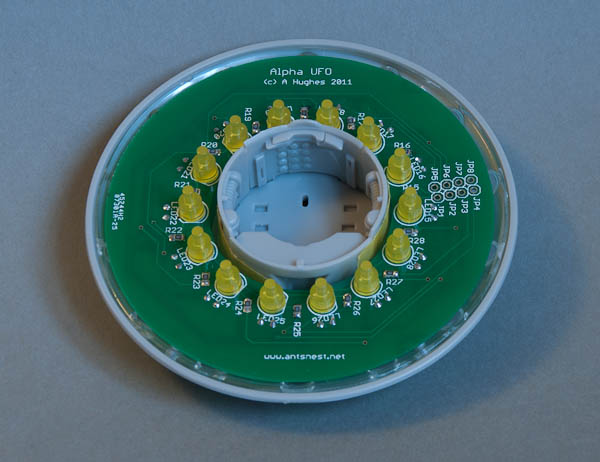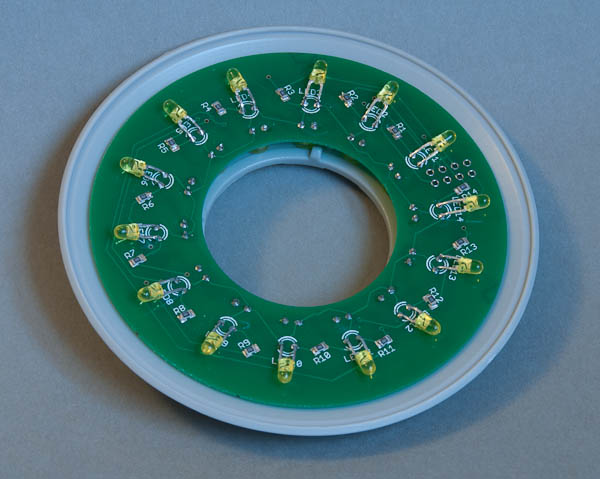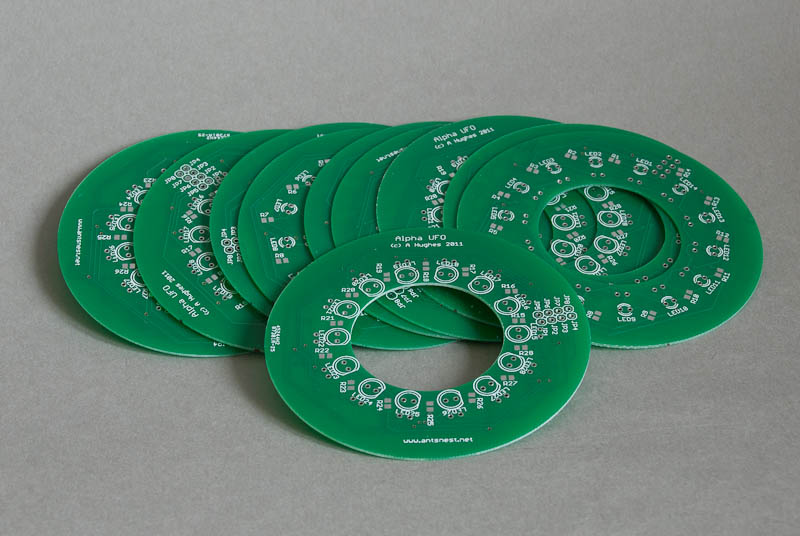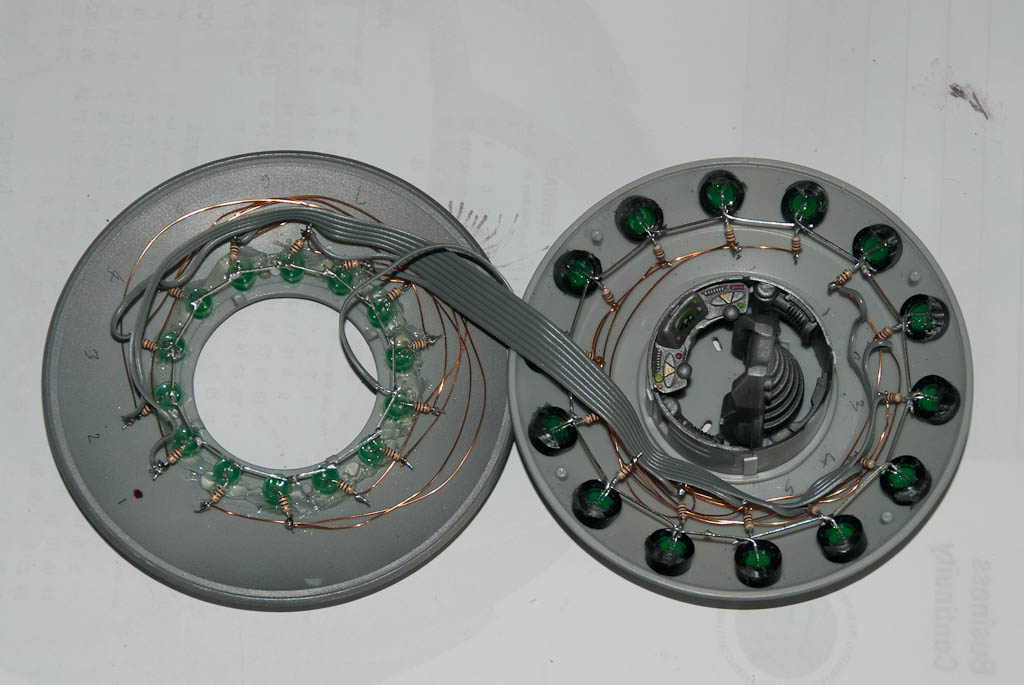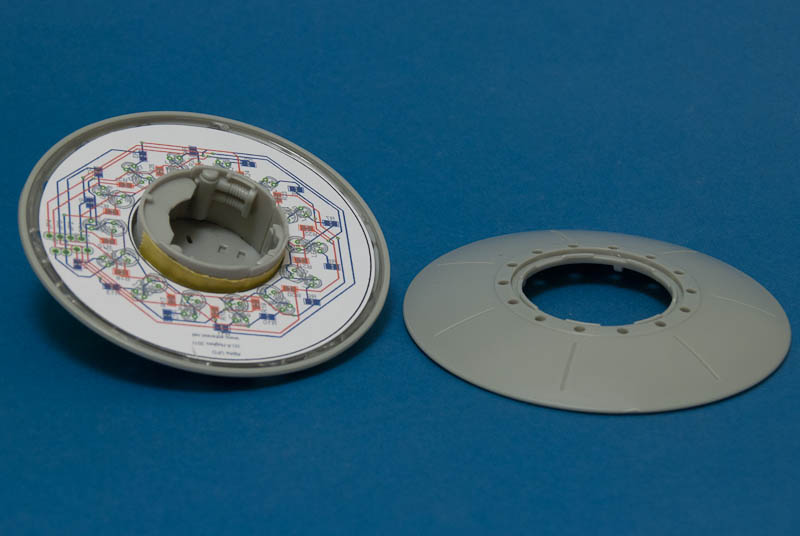Having done some work recently with the Atmel ATTiny 84 microcontroller in a SOIC surface mount package, I had a casual thought back to the lighting module I did for the Pegasus Alpha Centauri UFO kit a couple of years ago – namely “could I now get all the control circuitry for animating the LEDs onto the same PCB inside the UFO.
After several weeks of fiddling with the design, the answer is a resounding yes!.
So here is V2. Totally self contained. Everything is on the one PCB that just drops into the UFO around the centre crew compartment. The mode selection switch has even been incorporated as a magnetically operated reed switch on the board. Just wave a magnet over the part of the saucer that is resides under to switch between all the lighting modes, or low power standby.
Ok there’s one caveat. There’s still no room for a battery, so a couple of leads still have to be attached to an external 4.5V supply – 3AAA’s which should be good for a couple of days continuous operation.
Here is it in action
